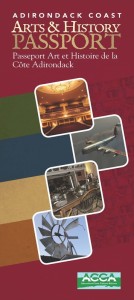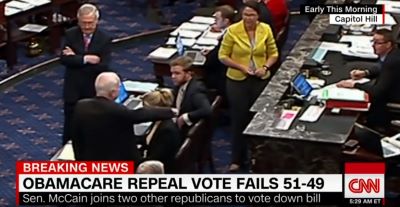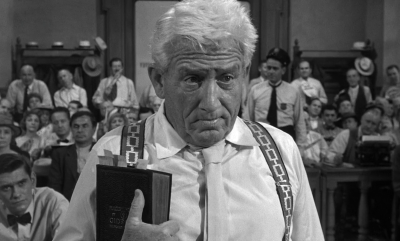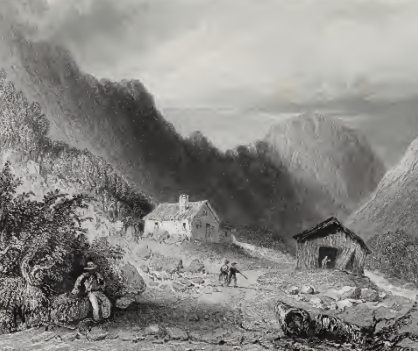
Passports are an underutilized resource for promoting tourism and community identity. While I have been a strong advocate for the creation and use of passports at the local, county, and regional basis for schools and tourism, I only now have realized the potential funding opportunity with the latest round of funding through the Regional Economic Development Councils (REDC).
This epiphany began at the annual conference of the Association of Public Historians in New York State in Corning in April. On the display table there was a pile of Adirondack Coast Cultural Alliance passports.
The booklet provides for stamps at 14 different venues. It was created in 2013 with prizes being offered for those who had the passport stamped at all 14 sites. Evidently there were leftover passports from the 2013 contest. I don’t know if the contest was repeated but regardless, it is an example of what can be done. The project was funded by a variety of local and regional sources.
A few weeks later I was informed by the Dutchess County Tourism Department, which is a private organization, of the creation of a Dutchess County Passport. The purpose of the passport is stated by the County Executive:
Welcome to the Dutchess County Passport! As a diverse community of hamlets, villages, towns, and cities, Dutchess County harbors many historical jewels that do not appear in most travel guides. The purpose of the Passport is to provide a brief overview of each municipality’s history, offering residents a chance to explore their heritage and provide travelers with suggestions of places to visit. The following entries capture some of the many outstanding sites to see in each community, places that will in turn introduce you to other attractions in the area.
To make the best use of your Passport, be sure to visit the clerk’s office at the municipal hall of each of the villages, towns, and cities. A list of these offices, with their addresses, hours of operation, and phone numbers is provided at the end of the Passport. In each clerk’s office, you will be able to stamp your Passport and learn more about our communities. Collect all of the stamps and you will have truly seen the length and breadth of Dutchess County.
Each municipality has a one-page write-up with space for the municipal stamp. There is a list of the stamping locations. In some cases there are alternate locations as well such as at an historic site, library, or restaurant which have expanded hours compared to municipal offices. Even though it is touted as a tourist item, I think the county passport provides a great opportunity to get people involved in their community. It is easy to imagine users being competitive about collecting the stamps from all the county’s municipalities. Every county should have a county passport and not just for the municipalities, but the historic sites as well. You can see a pdf of what Dutchess County did here. This project was funded by the county.
Passports also can be created for special occasions. For example, as reported in a previous post a on “Path through History: Some Modest Proposals,” in May 2014, Erie and Niagara counties had a “History in Your Backyard Weekend” which included seven locations and the distribution of commemorative passports which would be stamped at each location and with prizes.
The issue of passports even goes back to September 13, 2012, barely two weeks after the Path through History project was officially inaugurated when I wrote:
The problem I have with the [Hudson Valley] Ramble [in September] is the same as with the Path through History – it is about listing sites or events. No path is created. Events in the same locality might be weeks apart; events on the same theme might be simultaneous. There is no thematic or geographic passage/trial/byway/route/itinerary one could present to a tour operator given the scheduled events. There is no passport that can be stamped as one visits the various sites or partakes of the various activities. It’s great that the Seaway Trail has a day dedicated to walks which can be taken at different locations, but suppose someone wanted to do all of them? Recently an 82-year old from Westchester made national news for climbing the 46 high peaks in the state. What do you get for completing the historic walks in the state? Is there even a list of them?
More than 2½ years later, the situation is no better. However the Regional Economic Development Councils may provide an opportunity to the history community where the Path through History project has failed: fund paths. Market New York is a funding pool of up to $12 million that the history community should investigate in each region to fund Pathfinders and Passports.
Here is the description of Market NY from the 173-page guidelines for 2015, just released for the Regional Economic Development Council process:
Market NY is a grant program established to strengthen and encourage tourism growth by promoting tourism destinations, attractions, and special events. Additionally, Market NY will support capital grant funding for tourism facilities in New York. The Market NY program and each funded proposal will work to support the Regional Council long term strategic plans for economic growth in regions, as well as to attract visitors to New York State. For the 2015-2016 Fiscal Year, up to $12 million will be available for Market NY, a program that will support regionally themed New York focused projects.
Funding is available for projects intended to create economic impact by increasing tourism in a region. Grant funding will be allocated among the ten regions, each represented by a Regional Council, based on each Regional Council‘s development and implementation of a five-year strategic plan that sets out a comprehensive vision for economic development and specific strategies to implement that vision. Regional Council strategic plan information can be found at: http://regionalcouncils.ny.gov/. Funding will be allocated to eligible, top scoring projects.
1.) Regional Tourism Marketing Competition- up to $5 million in funding available
Applicants must demonstrate how the marketing project will work to promote and forward the tourism goals of the corresponding Regional Council’s strategic plan. Applications will be accepted for projects that market regional tourism destinations or attractions and existing or newly created special events. Proposed marketing projects should look to align with the goals and strategies of I LOVE NY which include increasing the perception and consideration of New York State as a travel destination, creating a positive economic impact and increasing tourism.
2.) Tourism Facility Funding- up to $7 million in funding available.
Tourism Facility Funding proposals (capital/construction projects) must be in alignment with the appropriate Regional Council(s) strategic plan and/or show how implementation of the project will promote and forward the strategic tourism goals of the corresponding Regional Council’s plan. Applications will be accepted for projects that include plans to expand, construct, restore or renovate tourism destinations and attractions.
Wineries and ski resorts are aware of this funding, and something similar has already been within the history community. One of the 2014 Market NY grants acquired through the REDC process was for Hanford Mills Museum for a project titled “Exploring Rt 28 Kingston to Herkimer”. Here is the project’s description:
“The Hanford Mills Museum will implement a multi-media marketing campaign, “More Than112 Miles of Smiles”, encouraging travelers to venture off the NYS Thruway and explore attractions on/near NYS Route 28 between Kingston & Herkimer. This tourism project will feature attractions within three different regions where tourists will find an exciting mix of culture, history, adventure, activities and natural beauty in rural communities along the Route.”
The project received $37,500. That’s real money. As a next step an actual tour along Route 28 that could be marketed to bus tour operators could be created.
Headwaters History Days appears to be moving in that direction:
“Headwaters History Days 2015 is two full weekends of events, exhibits, open houses and activities celebrating the history, culture, folklife and landscape of the Central Catskills. On May 30 & 31 and again on June 6 & 7, we invite you to explore 16 sites across two counties, from Andes to Olive, where local history is treasured and preserved.”
The 2015 map is slightly different from the 2014 map, but both are centered on Route 28. The dates of this event would have counted for the Path through History Weekends last year, but not this year. That is part of the ongoing silliness of the Path through History project.
There are numerous other examples of organizations which have developed bus tours, walking tours, self-guided tours, or even just points on a website that lend themselves to the creation of passports and Paths. These could be promoted to tour operators, integrated into school curricula, and used to develop a sense of place, a sense of belong, and a sense of community at the local, county, regional, and state levels.
Creating paths and passports requires cooperation and collaboration not only within the history community, but with the county tourism departments and Regional Economic Development Councils.
It will take grassroots action however, since there is no state leadership. The deadline for this year’s funding is July 31 so time is of the essence.






Please take note that applicants do have to be prequalified through NY Grants Gateway, a very cumbersome process that can take several weeks/months. Also note that applicants must focus on one region only – as defined by the economic development councils. That said this is a very good source of funding for heritage tourism projects.
This is an excellent point also made at the recent workshops I attended for the Consolidated Funding Application. If an organization is not already registered as licensed to receive funding from the state, then the odds are that process will not be completed by July 31. In these situations, it may be best to apply through a municipality.
However the point about multiple regions is incorrect. Some of the grants issued for 2014 as reported here in New York History were for more than one region. Multi-regional applications were mentioned in several of the workshops I attended and they may carry more weight at the state level than a single-region proposal.
Regarding: >>>>> A few weeks later I was informed by the Dutchess County Tourism Department, which is a private organization, of the creation of a Dutchess County Passport.The purpose of the passport is stated by the County Executive <<<<<<
I was curious why this came out of Dutchess County Tourism & the County Executive and not the Office of The Dutchess County Historian. . . . . . . . .After all it would seem that should be where it should have come from since it is most like the County Historian had some input for the history of each municipality included – then again the Dutchess County Historian has a mere fraction of the funding Tourism does . . . . . .Sometimes I just don't get it – Why is Dutchess County History treated as a welfare client (orphan child) of Tourism . . . . .Maybe Social Services & Family Court should get involved.
In the original post there was a reference to Will Tatum, the Dutchess County historian, working with Mary Kay Vrba, Dutchess County Tourism, produceing the passport. That collaboration dates back to when I was part of the 300th Anniversary committee for the county and suggested a history passport be created. Will Tatum was hired later. The references to the two of them was edited from the published version. For clarification, the county historian is a county employee while the tourism department is a private group as is the case in other counties where groups like the Chamber of Commerce are involved.